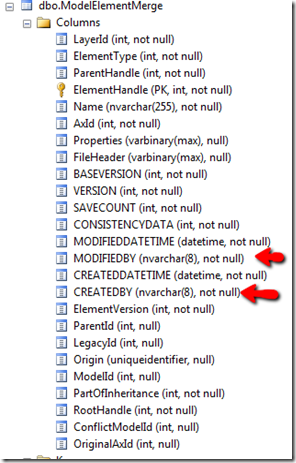The given value of type String from the data source cannot be converted to type nvarchar of the specified target column.
If you are upgrading to a later cumulative update and try to import a model you may get this error if you haven’t followed the steps.
You have to run the powershell command before you start the imports. This updates the model store schema to accept new models.
I wanted to find out what was changed in SQL. So, I ran an SQL trace to see which table caused the problem. Then I found that the ModifiedBy and CreatedBy fields where extended from 5 characters to 8 characters.
| Before (CU6) | After (CU7) |
 |  |
